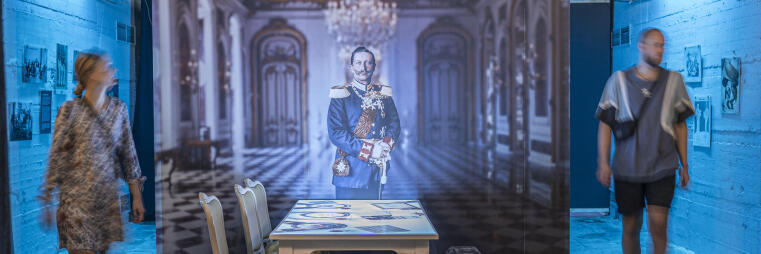
Exihibition "Up to Date? Wilhelm II. in Dicourse"
Preliminary note
In the summer semester of 2022, students of the Münster School of Design under the direction of Prof.in Claudia Grönebaum and Prof. Henning Tietz have developed seven exhibition stations in close cooperation with the project team "Zur Sache WWU", in which various aspects that are up for debate in relation to Wilhelm II are presented. Each station follows a specific visual strategy and thus represents an independent contribution to the approach of a contemporary approach to the namesake of the University of Münster. The exhibition venue - a disused pedestrian tunnel between the old town and the castle district from the early 1970s - brought with it a special atmosphere.
The exhibition has worked with strong visuals and space. The documentation shown here can therefore only give a very limited impression of the exhibition. The different room installations invited to participate, to observe and to explore. Explanatory texts were necessary, but the focus was on the exhibits and the scenography. In this online-documentation, unfortunately, the relationship text/image is reversed.
The exhibition texts documented here were written by the project team in consultation with the students. The aim of the texts was to introduce a general audience to the respective issues in a very brief manner (maximum 1,200 characters per text).

© Paul Metzdorf Station 0: Introduction
Child of his time?
Wilhelm II was 12 years old when the German Empire was founded in 1871. When he inherited the throne in 1888, Germany was in the process of becoming one of the leading nations in Europe - militarily, technologically and economically. Industry and its workers played a major role in this development. The growing prosperity raised the hope among many that technological modernisation would be followed by social modernisation - better working conditions, gender equality, democracy. Others, on the other hand, did everything they could to preserve the old, hierarchical conditions.
Wilhelm II also experienced this tension in his family: while his grandfather rejected any social change, his parents openly thought about developing the monarchy further. How did Wilhelm II position himself on these issues, what effects and consequences did his political actions have, how is his role to be assessed from the perspective of the time, and how from our present perspective? These questions are illuminated in the seven stations of the exhibition and put up for discussion.
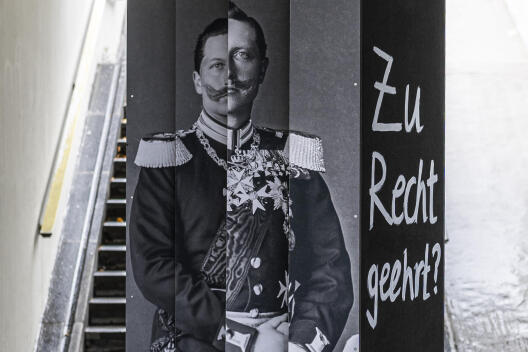
© Paul Metzdorf Rightly honoured?
The University of Münster officially bears the name Westfälische Wilhelms-Universität Münster, or WWU for short. It is named after Wilhelm II, who elevated the Royal Academy to a university again in 1902. The name was given in 1907 at the university's own request; in 1929 it was dropped by the government in Berlin, but continued in Münster. Immediately after the Second World War, the Kaiser name apparently did not fit the times, but in 1952 the university decided to officially return to the old name - undoubtedly an honour.
But who was actually honouring whom here? In 1907, the emperor honoured the university, which hoped the imperial name would bring advantages for the future. In 1952, the tribute to the ex-emperor was meant to remind us of a better Germany - before National Socialism and the Weimar Republic. The perception of the imperial era has changed a lot since then and how we deal with its memory continues to be debated The exhibition "Contemporary?" focuses on Wilhelm II, who is at the centre of the debate "Zur Sache WWU".
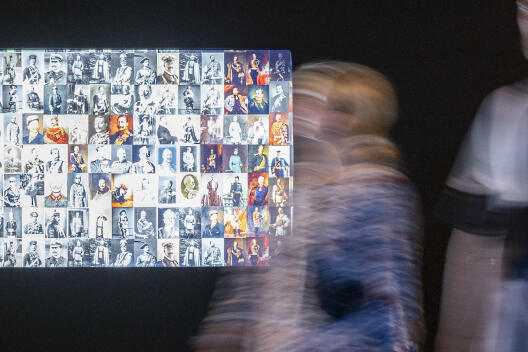
© Paul Metzdorf Wilhelm II learned early on that he had a role to play. His left arm, atrophied from birth, was not allowed to be visible. Instead, Wilhelm II was to embody the power and strength of the young German Empire. He made this his own: Like many other monarchs before him, he deliberately shaped a public image, which he had disseminated via the new mass media. With his eagle helmet and twisted beard, he is unmistakable to this day.
Wilhelm II was born into his role. Deeply religious, he was convinced that he had been chosen by God for his office. From this he derived for himself the right to rule absolutely, but also the duty to look after the welfare of his subjects. Thus, at the beginning of his rule, he courted the affection of the workers with progressive labour laws, but found it difficult to deal with opposition. "Only one is master of the realm, I will tolerate no other", he said in a speech in 1891, triggering one of his first scandals.
Contemporaries noticed early on that there was a gap between Wilhelm II's aspirations and reality. This is most visible in the countless caricatures that picked up on his foibles.
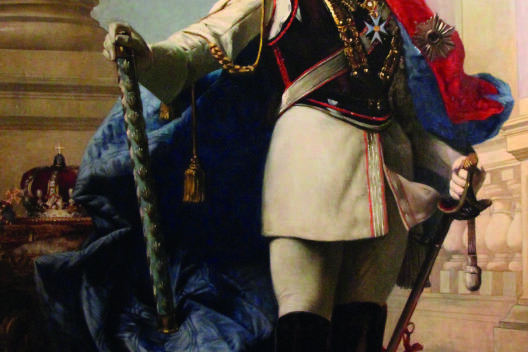
© Wikipedia CC-0 Context 1 - The German Empire
The idea of a German nation under Prussian domination gained acceptance in the 1860s in the so-called German Wars of Unification. Victories against Denmark, Austria and France demonstrated the military superiority of a German confederation. In 1871, the German Empire was founded and Wilhelm I, King of Prussia, was proclaimed Emperor.
The Reich was formally governed by the Federal Council, in which the 25 federal states and the Reich province of Alsace-Lorraine were represented. The Emperor was chairman, as first among equals. He appointed the Imperial Chancellor and the ministers and was commander-in-chief of the army. The government was controlled by the Reichstag, the composition of which could be decided by all men over the age of 25 in a free secret ballot. Women's suffrage was not introduced until after the end of the Empire. The Reichstag decided on laws, the government's budget and all military expenditure.
With the founding of the empire, a new centre of power had emerged in the middle of Europe. An important goal of the foreign policy of the first chancellor Otto von Bismarck was to create trust and secure peace through a complex system of alliances.
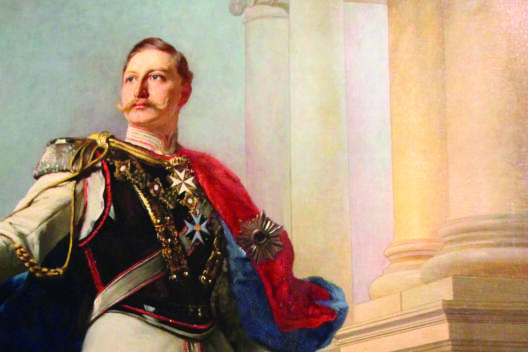
© Wikipedia CC-0 Context 2 - Wilhelm II's accession to power.
The Kingdom of Prussia covered almost 2/3 of the area of the German Empire and dominated the military, agriculture and industry. There was a parliament consisting of two chambers, the Herrenhaus, dominated by the nobility, and the Abgeordnetenhaus, elected according to a three-class system. Tensions often arose between conservative Prussia and the more progressive Reichstag. It was therefore necessary to separate state and imperial business: Prussia ceded, for example, the Foreign Office, the Central Bank and the Navy Ministry to the Reich.
In 1888, Wilhelm II inherited this "double crown". His accession to power was associated with great hopes, for advancing industrialisation brought social problems. The questions Wilhelm II faced were manifold: How could the mass of industrial workers be protected from exploitation? How could - on the other hand - the nobility maintain its privileges in the face of the growing prosperity of the middle classes?
Wilhelm II also marked the beginning of a new era in foreign policy: instead of being cautious like Bismarck, he was convinced that his claim to world renown and imperial greatness could only be achieved through military strength.
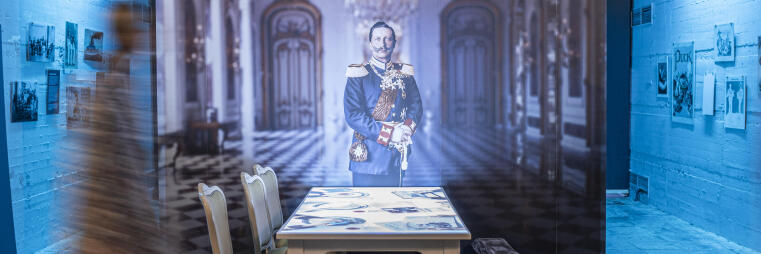
© Paul Metzdorf 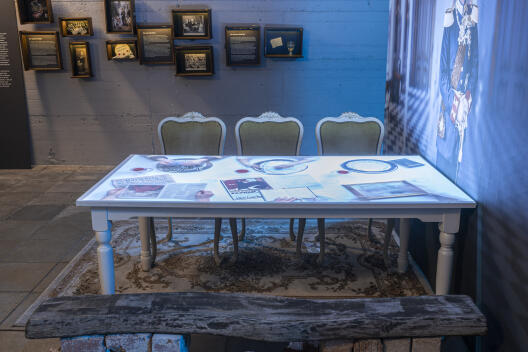
© Paul Metzdorf Station 2: Of the German Nature - Society in the Imperial Era
The German Empire experienced great social tensions in the 1880s. Whereas Bismarck was intent on confrontation with the Kulturkampf and the Socialist Laws, Wilhelm II strove to achieve a balance in domestic politics after his accession to power. In 1890 Bismarck handed in his resignation. Wilhelm II subsequently had some of the provisions that had been directed against the Catholic Church deleted and took important measures to protect the working class with the new trade regulations.
However, Wilhelm II was not able to maintain this new course for long: The contradiction between the ideal of a social, inclusive emperorship and his otherwise national-conservative and thus exclusionary convictions could not be resolved. Actual social reforms failed to materialise.
Nevertheless, Wilhelm II never tired of pointing out the achievements of his first years in power. This was also the case in a speech he gave in Münster in 1907: Before the bishop present, he emphasised the reconciliation with the Catholics and - with the nobility and business representatives in mind - praised the industriousness of Westphalian agriculture and industry. Full of conviction, he said: "The world will one day be healed by German nature.

© Uni MS | Eckhard Kluth The Brave soldier
With few exceptions, Wilhelm II appeared in uniform in photographs and paintings. On the one hand, this underlined his claim to power as the supreme commander of the army, but on the other hand it signalled a deep attachment to his (male) subjects.
Due to compulsory military service, all young men had to serve at least one year and were then obliged to serve in the war as reservists. While in all other areas of life the different social classes hardly came into contact with each other, in the military there was a direct link to the emperor at the very top, even for the common soldier, via the chain of command. Although the military was also full of social injustices, as the "school of the nation" it was undisputed as an institution even in peacetime.
The great social importance of the military was also due to the conviction that the foundation of the German Reich had only become possible through the so-called wars of unification. Members of the military were therefore held in high esteem. The uniform gave them a kind of leap of faith, which also made social advancement possible. On the other hand, men who were invalided out for health reasons had to live with a social stigma that was hard to overcome.
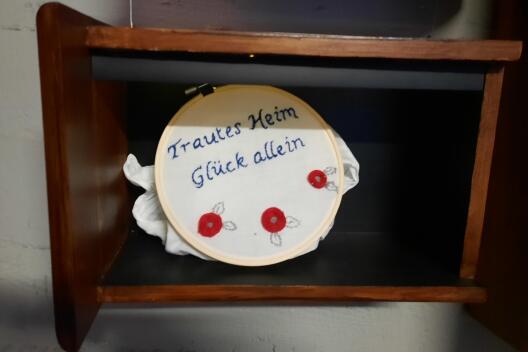
© Uni MS | Eckhard Kluth The Good Housewife
When it came to the role of women in society, Wilhelm II cited his wife, Empress Auguste Victoria, as an ideal role model. She kept in the background, was involved in charitable organisations, was church-minded and otherwise concentrated entirely on her family. The idea of children, cooking, church and clothes (the four "Cs") as the domains of women dates back to this period as a bourgeois ideal.
In order to fulfil this role, girls did not need to graduate from high school or university. However, they were subject to compulsory education. After attending primary schools, they could, if their parents could afford the school fees, attend a domestic school or a higher girls' school - a prerequisite for training as a teacher or nurse. As preparation for family life, these professions were socially accepted. However, the career ended with marriage.
In addition to the state schools, there were also many private institutes where daughters of higher society learned how to support their husbands later in life by managing the household and raising the children they had together.
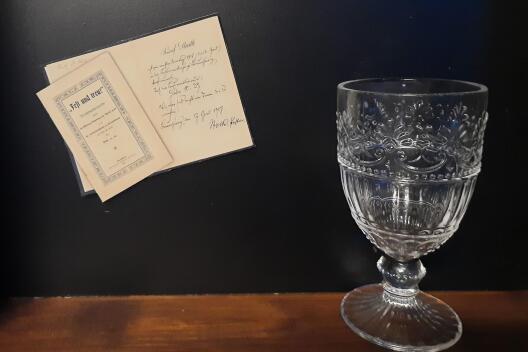
© Uni MS | Eckhard Kluth The pious subject
Since the Reformation, the respective sovereigns of Protestant territories had also been in charge of the church in their territory. This so-called sovereign church regiment existed until 1918, so Wilhelm II, as German Emperor, was the supreme church ruler of all Protestant Christians in the Reich.
The fact that there were also many Catholics in the German Reich became a problem when the spiritual leader of the Catholics, Pope Pius IX, who also rejected modern developments in Germany, claimed infallibility for himself and demanded a return to the old conditions in an encyclical. From the point of view of the imperial government, this called its state authority into question. The attempt to push back the Pope's influence led to the so-called Kulturkampf, which officially ended in 1887, but whose after-effects were felt well into the 20th century.
There were protests from the Protestant side against the state's actions in the Kulturkampf. As members of the unofficial state church, however, the Protestant Christians could rightly feel privileged, because their fellow believers occupied all the high government and administrative posts in the empire.
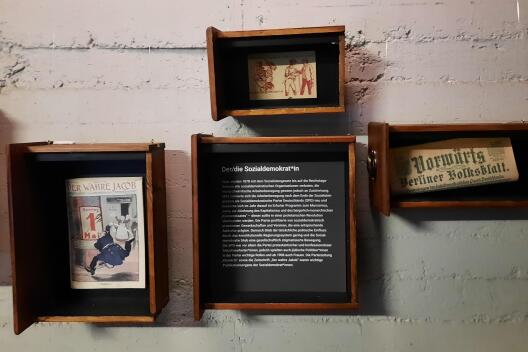
© Uni MS | Eckhard Kluth The Social Democrat
Although the Socialist Law of 1878 banned all social democratic organisations except for the Reichstag faction, the labour movement, which was critical of the monarchy, gained support. In 1890, after the end of the Socialist Laws, the workers' movement reformed as the Social Democratic Party of Germany (SPD) and in the Erfurt Programme the following year declared its support for Marxism and its rejection of capitalism and the bourgeois-monarchical "class state" - which was to be overcome in a proletarian revolution.
The party benefited from social-democratic oriented trade unions and associations, which shaped a corresponding subculture. Nevertheless, actual political influence remained low due to the constitutional system of government and social democracy remained a socially stigmatised movement. The SPD was primarily the party of Protestant and non-denominational industrial workers, but Jewish politicians also played important roles in the party and, from 1908, women as well.
The party newspaper "Vorwärts" and the magazine "Der wahre Jakob" were important publications of the social democrats.
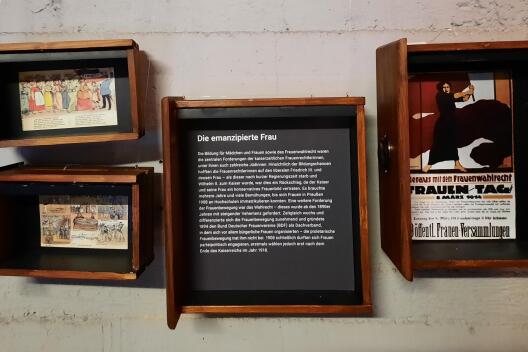
© Uni MS | Eckhard Kluth The emancipated woman
Education for girls and women as well as women's suffrage were the central demands of the women's rights activists of the imperial era, among them numerous Jews. In terms of educational opportunities, the women's rights activists hoped for the liberal Frederick III and his wife - when the latter died after a short reign and Wilhelm II became emperor, this was a setback, as the emperor and his wife held a conservative view of women. It took several years and many efforts before women were also able to enrol at universities in Prussia in 1908.
Another demand of the women's movement was the right to vote - this was demanded with increasing vehemence from the 1890s onwards. At the same time, the women's movement grew and differentiated and in 1894 founded the Federation of German Women's Associations (Bund Deutscher Frauenvereine, BDF) as an umbrella organisation, in which mainly bourgeois women's associations were organised - the proletarian women's movement did not join. In 1908, women were finally allowed to become involved in party politics, but they were not allowed to vote for the first time until after the end of the empire in 1918.
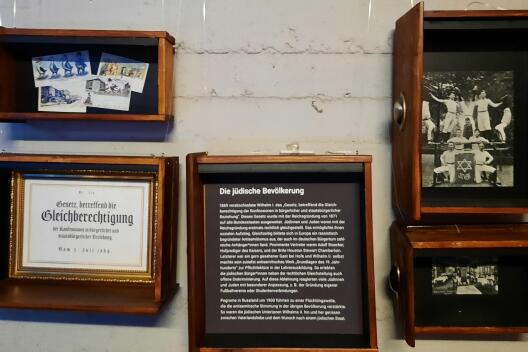
© Uni MS | Eckhard Kluth Jews
In 1869, Wilhelm I passed the "Law Concerning the Equal Rights of Confessions in Civil and Civic Relations". This law was extended to all federal states with the founding of the Reich in 1871.
With the founding of the empire, Jews had equal legal status for the first time. This made social advancement possible for them. At the same time, an anti-Semitism based on racism developed in Europe, which also found numerous supporters among the German bourgeoisie. Prominent representatives were Adolf Stoecker, court preacher to the Kaiser, and the Briton Houston Stewart Chamberlain. The latter was a welcome guest at court and Wilhelm II himself made his deeply anti-Semitic work "Fundamentals of the 19th Century" compulsory reading in teacher training. Thus, in addition to legal equality, Jewish citizens also experienced open discrimination. Many Jews reacted to this rejection with special adaptations, e.g. the founding of their own football clubs or student fraternities.
Pogroms in Russia around 1900 led to a wave of refugees, which intensified anti-Semitic sentiment among the rest of the population. Thus, the Jewish subjects of Wilhelm II were torn between love of the fatherlandand the desire for a Jewish state.

© Paul Metzdorf Station 3: Arms race at sea - Naval enthusiasm and imperialism
Wilhelm II was not content to administer the German Empire created by Bismarck. He wanted to keep up with the competition between nations and establish his empire as a world power. In his view, this required not only a strong army but also a strong fleet. However, the world's oceans were dominated by English ships. So Wilhelm II initiated an ambitious fleet-building programme with which he upset the established balance of power.
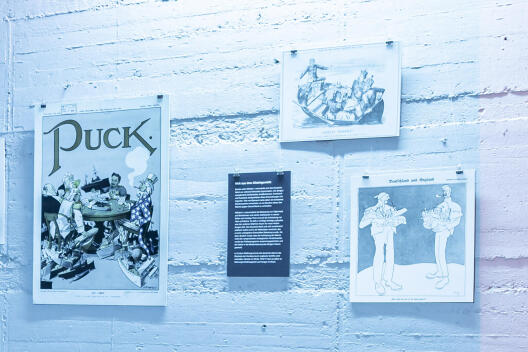
© Paul Metzdorf World out of balance
Already under Wilhelm I, the German Reich developed into the world's leading export nation. The other major European powers, Great Britain, France and Russia, watched these developments with suspicion. Otto von Bismarck had therefore developed a complex system of alliances, to prevent an alliance of these three powers against Germany.
Wilhelm II underestimated the importance of diplomacy and alliances and instead relied in his speeches on pithy tones and on arming the army and navy. Thus, he allowed important treaties to expire, leaving room for other powers to forge new alliances. The German Empire found itself increasingly isolated politically and embroiled in an arms race that was becoming an unsustainable financial burden. Then, when it became clear that naval rearmament was not delivering the promised strategic advantage, the fleet program was cut back and the money was put into modernizing the rest of the army. In World War I, the German navy was unable to prevent the blockade of the North Sea by British ships. As a result, there were food shortages and hunger in the Reich as early as the winter of 1916/17.
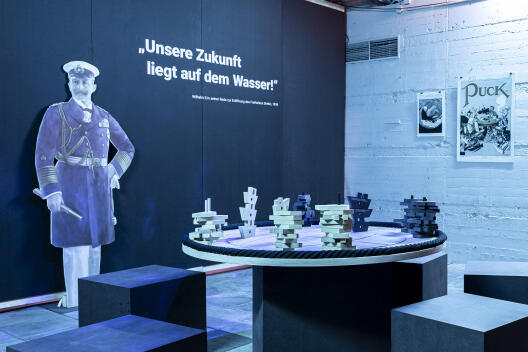
© Paul Metzdorf Arms race on the water
Before 1900, the German Empire had the strongest army in Europe, but its fleet was just enough to protect the coasts of the North and Baltic Seas. However, Wilhelm II had learned a lot about the importance of a strong navy from his cousins in England: It was only thanks to its powerful fleet that England was able to maintain its world empire.
For this reason, Wilhelm II promised the later Admiral von Tirpitz his full support in expanding the German navy. He was convinced that "our future lies on the water." However, building ships was very costly and naval expenditures had to be approved by the Reichstag. Tirpitz succeeded in convincing the representatives with his draft of the first Fleet Act, presented in 1898, which guaranteed the construction of more than 60 ships. At the same time, the German Fleet Association was founded and an unprecedented PR campaign was launched to establish fleet building as a national task.
These developments did not go unnoticed and an arms race with England ensued. In 1908, Tirpitz had to admit that his goal of being able to seriously damage the British fleet in the event of war was no longer achievable.

© Uni MS | Eckhard Kluth Campaign for the Navy
In 1897, Alfred von Tirpitz was appointed head of the Reichsmarineamt. He succeeded in convincing the Reichstag to pass the first Fleet Act in 1898, but he needed support for his further plans. Together with industrialists, bankers and politicians, he founded the German Fleet Association as a lobbying organization. This association was soon joined by many other military and warrior associations, so that the number of members already exceeded 80,000 in the founding year. By 1913, the association had grown to 1,125,000 members, including 790,000 clubs and other corporations. This made the Flottenverein the most important of all nationalist associations in the empire.
The association financed campaigns to arouse enthusiasm for the navy among the population, including a column of ships on the Rhine or an exhibition on the navy. There were lectures, naval shows, brochures, and scrapbooks. And the press and other multipliers were specifically courted. The campaign proved successful: the Reichstag also passed the second Fleet Act. Much more present, however, is the influence of this campaign on children's fashion: the sailor suit was worn from the prince to the bourgeois child.
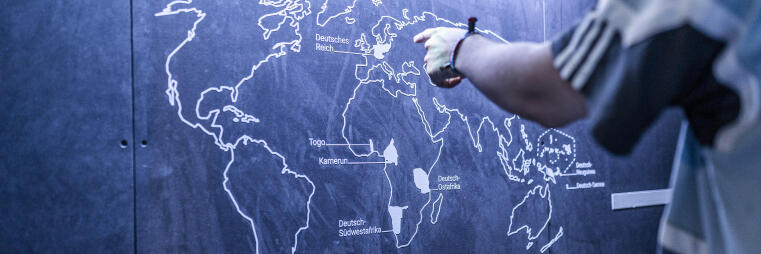
© Paul Metzdorf 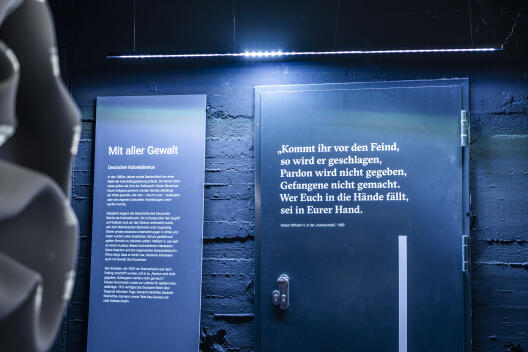
© Paul Metzdorf Station 4: With all the force - German colonialism
In the 1880s, Germany was swept by a wave of colonial enthusiasm. The distant continents were seen as places of longing. However, their inhabitants, today called indigenous peoples, were seen at the time as savages who - like their land - could be exploited or subjugated to one's own cultural ideas.
At the same time, the history of the German Empire as a colonial power began. As Europe negotiated access to territories around the globe, Reich Chancellor Bismarck found himself under pressure to act. Previously private German ventures in Africa and Asia were placed under state protection and later formally declared colonies.
Wilhelm II was very interested in expanding this colonial empire. His reaction to the so-called Boxer Rebellion in China shows that he was prepared to enforce German interests even by force. To the soldiers who were shipped from Bremerhaven to Beijing in 1900, he shouted "Pardon will not be given, prisoners will not be taken." This command became the guiding principle for later colonial wars.
By 1912, the German Empire had the following colonies: Togo, German East Africa, German West Africa, Cameroon, as well as parts of New Guinea and many South Sea islands.
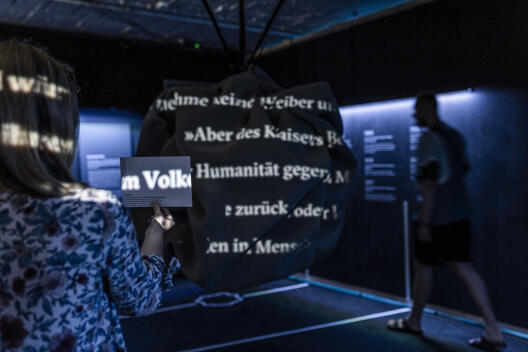
© Paul Metzdorf The first genocide of the 20th century
The German settlement in today's Namibia began with a fraud: In 1883, the Bremen tobacco merchant Adolf Lüderitz brought an entire bay with a natural harbor into his possession with a fraudulent contract. Further settlers drove the Ovaherero and Nama living there from their grazing land. Any resistance was bloodily suppressed.
In August 1904, the Battle of Waterberg took place, from which the German troops under Lothar von Trotha emerged victorious. Trotha had previously announced that he was aiming for "the destruction of the entire nation. So he had the fugitives pursued. The Ovaherero who were not shot died of thirst in the Omaheke desert. The Nama later suffered a similar fate. The survivors were interned and forced into forced labor.
The German public reacted in horror and in 1906 the Reichstag refused to finance a continuation of this war. As a result, Wilhelm II dissolved the Reichstag.
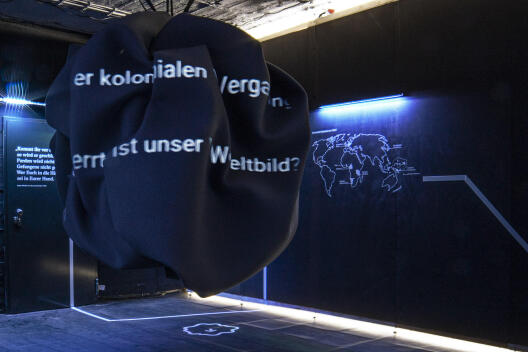
© Paul Metzdorf The memory of the German colonial empire
It is well known that Germany had colonies before 1918. However, the extent to which colonial crimes were committed there has only been researched in Germany since the 1990s. In May 2021, the German government officially recognized the crimes against the Herero and Nama as genocide.
Since then, there have been discussions about how reparations can be made. This also includes the return of looted cultural property. German museums and private collections contain numerous objects that came to Germany from the former colonies by dubious means. The registration of these objects is still in its infancy. Negotiations are also underway about the return of human remains that were brought to Germany for research purposes. Whether restitution is sufficient to compensate for such injustice is also a question for science.
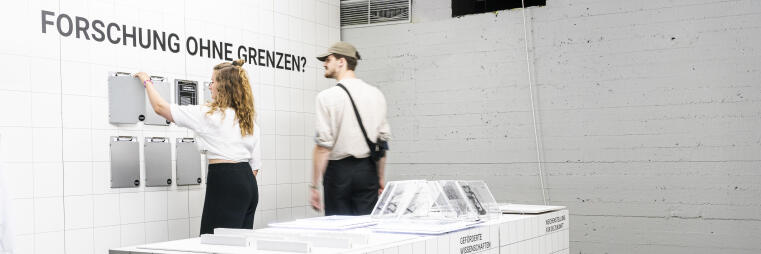
© Paul Metzdorf 
© Paul Metzdorf Station 5: Anything is Possible - Research in the Imperial Era
During the reign of Wilhelm II, German scientists made important discoveries in medicine, chemistry in medicine, chemistry, physics and technology: vaccines saved human lives, artificial colors and flavors gave German industry a global monopoly, and the automobile and the airplane changed the world. The fact that numerous Nobel Prizes went to Germany is proof of the significance of these achievements.
This was preceded by a systematic expansion of German universities. From the founding of the German Empire to the outbreak of World War I, the number of students doubled. In part to relieve top researchers of the burden of teaching, the Kaiser Wilhelm Society was founded - with strong financial support from industry. Wilhelm II was also personally interested in new inventions and took great pleasure in history and archaeology. At the same time, science was for him a means in the struggle for the German Empire's position of world power.
However, the rapid progress in science and technology also led to developments that, from today's perspective, represent aberrations. Thinking about the ethical limits of science also began in the empire.
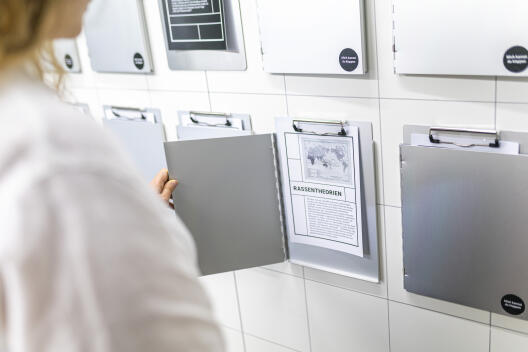
© Paul Metzdorf Progress without limits?
Illness and death were constant companions for people around 1900. Medical research made its greatest advances in times of crisis - wars and epidemics - and technical progress was associated with high personal risk for researchers - explosions, crashes.
The trade-off between the fate of individuals and the well-being of the community was also different from today's ideas due to the widespread hierarchical worldview. The same is true for the trade-off between environmental degradation and national prosperity. However, a rethinking of the question "What is science allowed to do?" began.
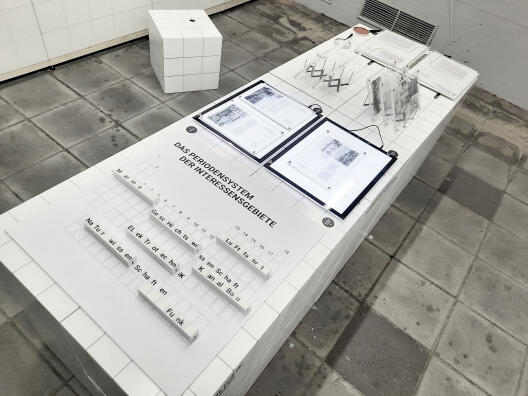
© Uni MS | Eckhard Kluth Wilhelm II and science
Wilhelm II's early education was relatively normal for a member of the higher nobility: although he received private tuition while his peers went to elementary school, he took his Abitur at the Friedrichs-Gymnasium in Kassel. He then went on to study in Bonn for two years, but mainly received private lectures there.
Wilhelm's attitude toward school and college was shaped by these personal experiences. He considered classical education - old languages, history - to be outdated and instead strongly advocated the expansion of secondary modern schools and the establishment of technical colleges. The main goal of school and university should be the cultivation of a German-national spirit and an orientation toward technical problems and questions of the present. Critical thinking or modernization of society were not called for.New technical processes made research at the level of cells and molecules possible. Medical progress and also successes in chemical research, e.g. the discovery of synthetic dyes, justified the high cost of the necessary apparatus. The idea of promoting basic research as a partnership between industry and the state by founding the Kaiser-Wilhelm Gesellschaft was therefore obvious, because in this way the profiteers shared in the costs, while at the same time cutting-edge research also remained under state control.
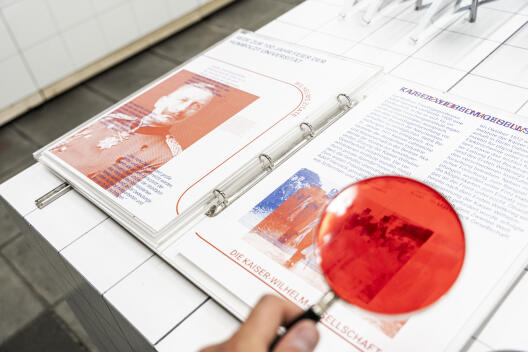
© Paul Metzdorf Kaiser Wilhelm Society
In 1909, Berlin theology professor Adolf Harnack wrote a memorandum in which he advocated independent research institutes to complement universities in order to enable basic research, especially in the natural sciences. His efforts were successful: on January 11, 1911, numerous representatives of German industry and science gathered at the Berlin Academy of Arts for the constituent meeting of the Kaiser Wilhelm Society. The various institutes were mostly financed by private donors, the salaries were paid by the state. Adolf Harnack was elected the first president, Wilhelm II was patron and name giver. In October 1912, the first institutes of the Kaiser Wilhelm Society were founded in Berlin Dahlem: the Institute for Physical Chemistry and Electrochemistry headed by Fritz Haber and the Institute for Chemistry headed by Ernst Beckmann. During World War I, war research was conducted at the various institutes: In addition to medical research, for example on vaccinations, the possibilities of using poison gas at the front were investigated under Fritz Haber. Although there were already calls for the Kaiser Wilhelm Society to be renamed after the First World War, this did not take place until after the Second World War - as the Max Planck Society.
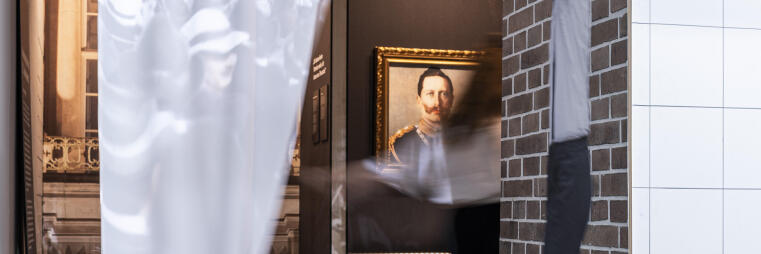
© Paul Metzdorf Station 6: Primordial Catastrophe of the 20th Century - The First World War
The assassination of the heir to the Austrian throne on June 28, 1914, is considered the trigger for World War I. In the diplomatic crisis that followed, it became clear that there was a lack of will for peace - on all sides.
German military leaders had long been contemplating a European war. As early as 1905, Field Marshal Alfred von Schliefen presented a memorandum that formed the basis for the strategy of the Supreme Army Command at the start of the war. Convinced of the superiority of the German army, it assumed a quick victory over France, to be followed by an equally quick victory against Russia. On August 1, Wilhelm II signed the declaration of war against Russia, and on August 3, that against France.
Although there were voices among the population urging peace, the press loyal to the Kaiser gave the impression of a general enthusiasm for war. After more than 40 years of peace, memories of the horrors of war had faded. At the same time, the rhetoric of Wilhelm II and his generals made an outside threat seem increasingly real. Thus, men went to war feeling that they were defending their homeland.
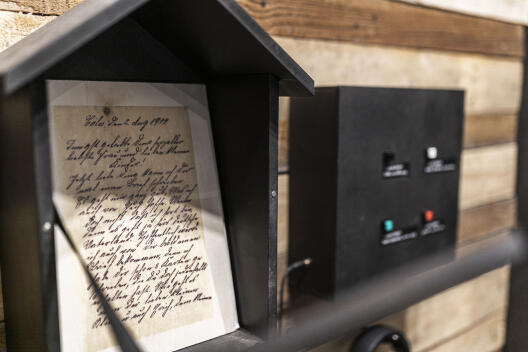
© Paul Metzdorf Rapid end to the war
During the First World War, around 28.7 billion letters and cards were sent - this was possible from the front to Germany free of postage. From their homeland, soldiers received not only letters, postcards and photos, but also parcels with provisions, clothing and luxury foods. The correspondence served not only to communicate, but also to boost the soldiers' morale. Field mail is an important historical source, as it provides insight into the individual front-line lives of several million soldiers. Censorship of letters did not take place systematically until 1916; before that, superiors controlled at their own discretion. Therefore, analyses of field mail allow us to conclude, for example, that the majority of German soldiers initially assumed a quick victory and a speedy return home.
For the audios please switch to the German site.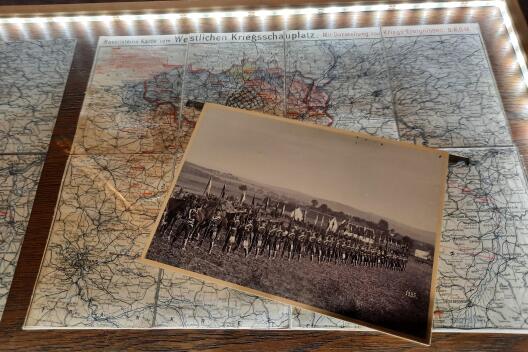
© Uni MS | Eckhard Kluth The start of war with illusions
The start of the war marked the end of a period of peace for the German Reich that had lasted more than 40 years. Neither Wilhelm II as the supreme army commander nor his generals had any experience with the reality of war until 1914. Their idea of warfare was shaped by the Kaisermanövern, which had been held annually since 1888. For the army command, these maneuvers served to gain an overview of the soldiers' level of training. They were also intended to give international observers an impression of the fighting strength and superiority of the German army.
Photos and newspaper reports of the maneuvers convey an image of order and efficiency. International observers, on the other hand, were more critical: tactics from the wars of the 1860s were still being practiced in the 1910s. Internal reports also show that preference was given to the tried and true instead of trying out new tactics in the face of new weapons.
In the first battles of the war, it quickly became apparent that soldiers' training as well as their protective equipment did not match developments in weapons technology. Machine guns and fast artillery led to high casualties in the first months of the war. The expected quick victory proved to be an illusion.
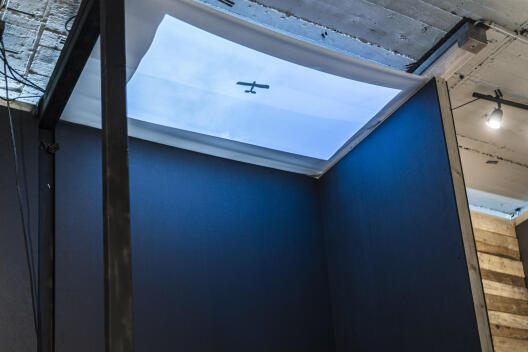
© Paul Metzdorf Material battles
The First World War represents a new form of war: Intensive armaments research and the further development of military technology by all parties participating in the war meant that soldiers were constantly faced with new weapons. Particularly on the Western Front, where the war became a grueling war of positional warfare lasting for years shortly after it began, the fighting turned into a battle of industrial materiel. Terms such as "Feuerwalze" [fire roll], "Trommelfeuer" [drumfire], or "Stahlgewitter" [steel tempest] are just as representative of this type of dehumanized warfare as the use of poison gas and flamethrowers. Thus, the First World War claimed an unprecedented number of dead and wounded. The traumatic situation in the trenches led to disillusionment and war fatigue among many.
For the audios please switch to the German site.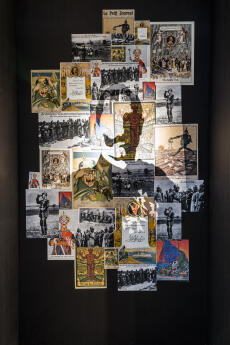
© Paul Metzdorf Emperor without power
Soon after the war began, Wilhelm II was no longer consulted on strategic decisions. When Paul von Hindenburg and his chief of staff Erich von Ludendorf took over the command of the army in August 1916, the emperor was also sidelined in domestic politics. From mid-1917, he was effectively powerless. For the German public, however, he remained a figure of identification. For this reason, imperial troop visits and medal ceremonies were staged time and again, the images of which were intended to boost morale both at the front and at home.
The emperor was also a figure of identification for the opponents of the war: with his eagle helmet and twisted beard, his figure became a symbol. From the first reactions to the war crimes in Belgium or the burning of Reims Cathedral until the end of the war, it was the figure of Wilhelm II who was accused or later showered with ridicule and scorn.
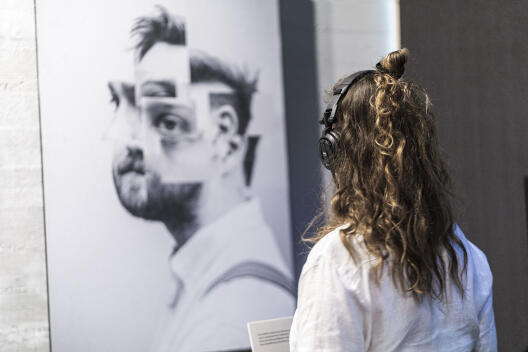
© Paul Metzdorf War. And then?
The number of soldiers of all parties killed in the First World War is estimated at over 9 million, in addition to several million dead civilians - estimates vary here.
Of the more than 15 million wounded, nearly 14 percent suffered severe facial injuries that left them disfigured for life. Loss of limbs and paralysis were also among the individual consequences of war (psychological trauma was not recognized as a consequence of war at the time). Prosthetic limbs and face masks were intended to help the men cope with their daily lives. As a rule, however, they could not return to their old occupations. Therefore, the general consequences of the war - unemployment, hunger and inflation - hit them particularly hard.
Due to the political turmoil following the abdication of Wilhelm II and the November Revolution, it took a long time for the economic situation to stabilize again and for ordinary people to resume a normal life.
For the audios please switch to the German site.End of the war
Since August 1918, the German army command had been growing increasingly certain that the war could not be won. The only thing left to do was to bring about a favorable peace agreement. The Americans' conditions included the abdication of the Kaiser and a democratization of the Reich. The latter was implemented by the formation of a new Reich government with the participation of the Social Democrats.
Wilhelm II did not grasp the gravity of the situation until Kiel sailors refused to go down against a far superior opponent in October 1918. He fled from Potsdam to Spa, Belgium, where the Supreme Army Command was stationed. There, abdication or heroic death of the emperor was openly discussed, but both were categorically rejected by him.
The sailors' uprising developed into the November Revolution and led to the abdication of most of the German princes. On November 9, without the consent of Wilhelm II, his abdication was also announced. Fearing mutinous soldiers, Wilhelm fled to the Netherlands a few hours later and signed his abdication there on November 28.
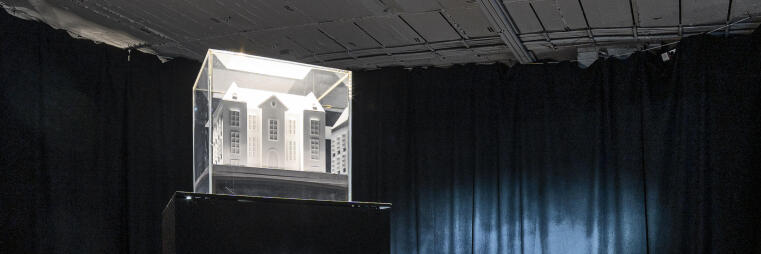
© Paul Metzdorf Station 7: Escape into a fantasy world - Wilhelm II in exile
Photos
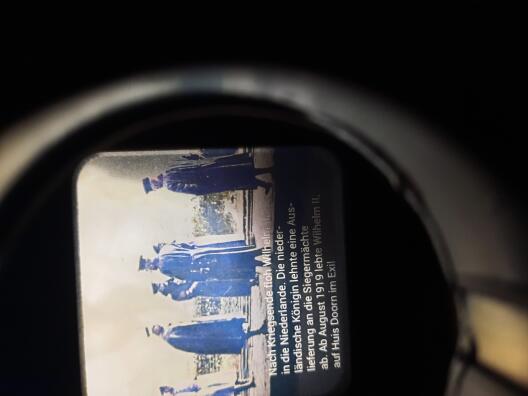
© Uni MS | Eckhard Kluth Wilhelm II asked for asylum in the Netherlands and bought Doorn House there in August 1919. Although the German state had confiscated the assets of the Hohenzollerns, it paid Wilhelm II a lot of money and even sent him furniture so that he could run a household befitting his station.
At Haus Doorn, Wilhelm II surrounded himself with loyal supporters of the monarchy. Even though in their eyes the ex-emperor had broken his oath of loyalty to the German people, the hope of a return to the monarchy was closely linked to the Hohenzollerns. In his memoirs published in 1922, Wilhelm II dismissed responsibility for the mistakes of the previous decades. The prosperity of Germany before 1914 was his achievement, but war and defeat were the fault of others.
Wilhelm II was hostile to the Weimar Republic and his anti-Semitic statements became increasingly radical. Finally, he sought contact with the National Socialists in the hope of becoming emperor of a fascist Germany. The sons of the emperor appeared publicly in Nazi uniforms, demonstrating a closing of ranks with the Nazis - to no avail.
Station 8: Notice Board

© Uni MS | Eckhard Kluth Many visitors left their answers to the two guiding questions of the exhibition "Child of his time?" and "Rightly honored?" on prepared cards on a large wall of notes at the exit of the exhibition. Even if these answers do not provide a representative picture of opinion, they contain important food for thought for the project team "On the matter WWU". You can find a first evaluation here.
Exhibition credits
An exhibition of the Westfälische Wilhelms-Universität Münster and the Münster School of Design.
Concept and realisation of the stations:
Jonas Altrogge Emma Bechtold, Johanna Linea Caspers, Amalie Elisabeth Ernst, Paula Götz, Alicia Huntgeburth, Jordana Aglaja Franziska Jeckel, Anna Kempkes; Miriam Klauke, Alexander Koletzko, Larissa Korte, Luca Lemmen, Angeliki Mandilara, Loya Meyer, Muriel Miermeister, Shajan Pieper, Pia Röttgers, Helena Schenk, Pia Schulte, Leonie Truß, Lars Mika Weber, Dana Wolter,Supervision:
Prof.in Claudia Grönebaum, Prof. Henning Tietz, MSD Münster.Overall concept:
Dr. Eckhard Kluth and Kathrin Schulte, WWU Münster.Consultation:
Dr. Silvia Necker, LWL Prussian Museum Minden.The exhibition is part of the project "Zur Sache WWU", in which the Westphalian Wilhelms University Münster puts its namesake, Wilhelm II, up for discussion. Further information can be found online at: wwu.muenster.de/zursachewwu.
We would like to thank the City of Münster, Office for Mobility and Civil Engineering, for providing the exhibition venue.
The images in the exhibition were provided by, among others: Bibliothèque Nationale de France, Paris; Bildagentur Preußischer Kulturbesitz, Berlin; Bildarchiv des Bundesarchivs, Koblenz; Deutsches Historisches Museum, Berlin; Deutsches Museum, Munich; Eye Filmmuseum, Amsterdam; Historische Bildpostkarten - Universität Osnabrück, Sammlung Prof. Dr. Sabine Giesbrecht; Marineschule Mürwik - Wehrgeschichtliches Ausbildungszentrum, Flensburg; Museum Huis Doorn, Doorn; Stiftung Preußische Schlösser und Gärten Berlin-Brandenburg, Potsdam; Sammlung Scherl/Süddeutsche Zeitung Archiv, Munich; Ullstein Bilderdienst, Berlin; Österreichische Nationabibliothek, Vienna.







